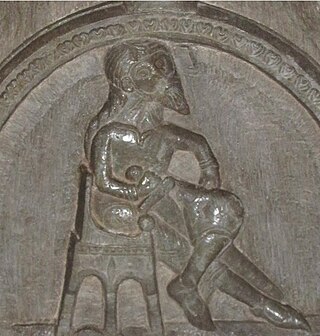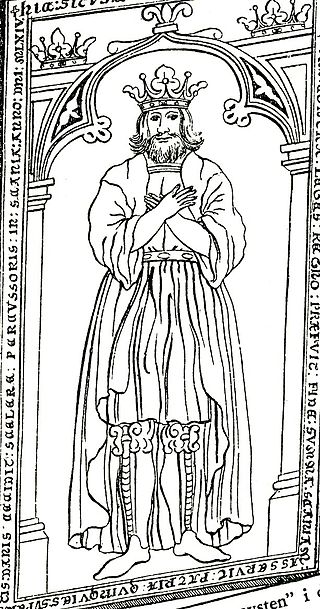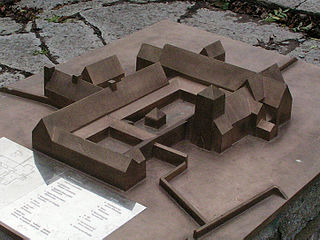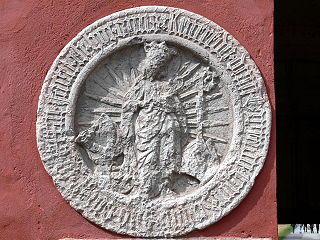Related Research Articles

Sune Sik,, was allegedly a Swedish prince. According to Olaus Petri, he would have been a younger son of King Sverker I of Sweden and father of Ingrid Ylva. In surviving contemporary documents one Sune Sik can be found who lived much later. That Sune Sik made a donation to Vreta Abbey as late as in 1297. He might have ordered a restoration of a chapel in which he eventually was interred, and later Cistercian tradition may then have turned him into a prince. This has caused some historians to view Olaus Petri's account of him as unreliable.
Richeza of Poland, a member of the House of Piast, was twice Queen of Sweden and once Princess of Minsk through her three marriages.

Sverker the Elder, also known as Sverker I, was King of Sweden from about 1132 until his murder. Of non-royal descent, he founded the House of Sverker, the rulers of which alternated with the rival House of Erik over the next century.

Inge the Elder was a king of Sweden. In English literature he has also been called Ingold. While scant sources do not allow a full picture of his term of kingship, he is known to have led a turbulent but at length successful reign of more than two decades. He stands out as a devout Christian who founded the first abbey in Sweden and acted harshly against pagan practices. The kingdom was still an unstable realm based on alliances of noblemen, and Inge's main power base was in Västergötland and Östergötland; one of the earliest chronicles that mention his reign knows him as rex gautorum, king of the Geats.

Philip or Filip was King of Sweden from c. 1105–1110 until 1118.
Magnus Minniskiöld was a medieval Swedish magnate from the House of Bjälbo. He is best known as the father of the renowned statesman Birger Jarl, and the ancestor of the later Swedish kings. He is sometimes believed to have perished in the Battle of Lena in 1208, though the evidence is not conclusive.

The Abbey Pax Mariae, more commonly referred to as Vadstena Abbey, is situated on Lake Vättern in the Roman Catholic Diocese of Stockholm and is a monastery of nuns within the Bridgettine Order. It was active from 1346 until 1595 and has been active since 1963, regaining status as an autonomous abbey in 1991.

Catherine Sunesdotter, was Queen of Sweden from 1244 to 1250 as the wife of King Eric XI of Sweden. In her later years she served as abbess of Gudhem Abbey in Falbygden.
Ulvhild Håkansdotter was twice Queen of Sweden and once Queen of Denmark through her successive marriages to Inge II of Sweden, Niels of Denmark, and Sverker I of Sweden. Ulvhild had an important role in the Nordic dynastic connections of her time, but the sources are insufficient on detailed circumstances. She is mentioned as a femme fatale of medieval Scandinavia, as well as a benefactor of the Catholic Church.
Helena or Elin, possibly also known as Maer, Mär or Mö, was Queen of Sweden as the wife of King Inge the Elder, and a supposed sister of King Blot-Sweyn of Sweden.

Helen of Sweden was a Swedish princess and daughter of King Sverker II of Sweden. She was the mother of Queen Catherine of Sweden. She was later Abbess of Vreta Abbey.

Vreta Abbey, in operation from the beginning of the 12th century to 1582, was the first nunnery in Sweden, initially Benedictine and later Cistercian, and one of the oldest in Scandinavia. It was located in the present-day municipality of Linköping in Östergötland.
Cecilia Johansdotter is the possible name of the wife of King Canute I of Sweden and mother of King Eric X of Sweden. Little is known about her except that she was of aristocratic origins and died sometime after 1193.
Ingegerd Haraldsdotter was a Norwegian princess who, by her successive marriages, became queen of Denmark and Sweden. Her husbands were Olaf I of Denmark and Philip of Sweden.
Helen, is the assumed name of a medieval Swedish princess and Danish queen, Queen consort of King Canute V of Denmark. The date of her birth is not known; her father was King Sverker I of Sweden and her mother has been assumed to be Sverker's first spouse, Queen Ulvhild.

Mariefred Charterhouse, sometimes referred to as Gripsholm Charterhouse, was a Carthusian monastery, or charterhouse, in the present town of Mariefred in Södermanland, Sweden, to which it gave its name; before the building of the monastery the place was known as Gripsholm. It was the only Carthusian monastery in Scandinavia, and one of the last monasteries established in Sweden before the Reformation.
Ingegerd Knutsdotter was a Swedish nun and noble, the first official abbess of the Bridgettine Abbey of Vadstena in 1385/88–1403.
Gerdeka Hartlevsdotter, or Hartlefsdotter, also called Gerdica (1370–1438), was a Swedish Bridgettine nun. She was the abbess of Vadstena Abbey from 1403 until 1422.

Skänninge Abbey, also known as St. Ingrid's Priory, was a convent for Dominican nuns in Skänninge in Sweden which existed from 1272 until 1544. It was founded by Ingrid of Skänninge, and as such, it was often referred to as St. Ingrid's Priory. Located near the church dedicated to Martin of Tours, it was originally named St. Martin's Priory, though this name was rarely used. The common name for it was Skänninge Abbey, but as there was also a convent for Dominican friars in Skänninge, it was often called Skänninge Nunnery.

Askeby Abbey was a Cistercian nunnery in operation from the late 12th century until 1529. It was located in Askeby outside Linköping, Sweden.
References
- ↑ Line, Philip (2007-03-31). Kingship and State Formation in Sweden 1130-1290. Brill. p. 87. ISBN 978-90-474-1983-9.
- ↑ Line (2007), p. 93.
- ↑ Lundberg, Erik; Curman, Sigurd (1935). Östergötland. Bd 2, Vreta klosters kyrka (PDF). Riksantikvarieämbetet. p. 5.
I Herrens år 1204 dog Priorinnan Fru Ingegerd, förutnämnde konupgs syster, hvilken under 40 år med kraft styrt detsamma klostret.
- ↑ Swedish Church History Yearbook, Volumes 44-46 (in Swedish). Swedish Church History Association. 1945. p. 247.
Mitt under all oron i landet tryggar abbedissan Ingegerd Sverkersdotter klostrets ekonomiska ställning genom sin godspolitik . Hon är den planerande och drivande kraften vid ny- byggnadsarbetena.
- ↑ Wågman, Oskar (1904). Vreta kloster: historik jämte vägledning vid besök i Vreta kloster kyrka och dess omgifning. P.A. Norstedt & Sönders förlag.
- ↑ Rosborn, Sven. När hände vad i Nordens historia. Lund: Historiska media, 1997.
- ↑ C. R. af Ugglas, 'Ärkebiskopen och priorinnan', Meddelanden från Östergötlands fornminnesförening 1942–44.